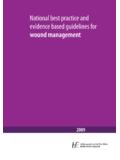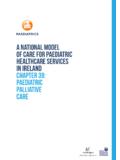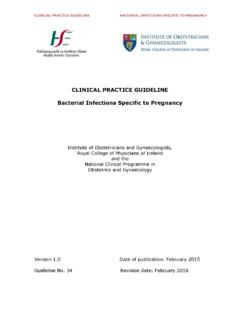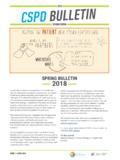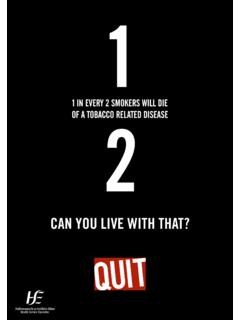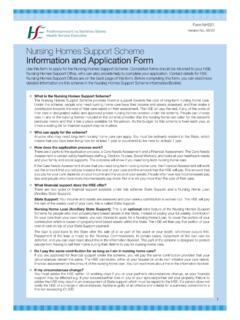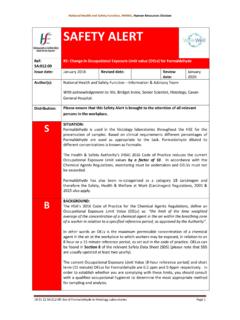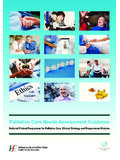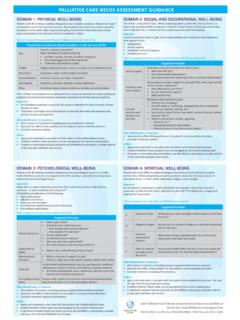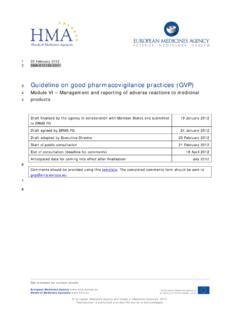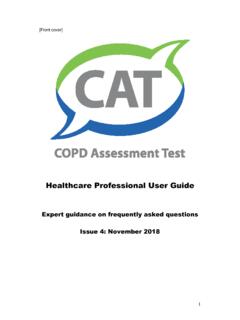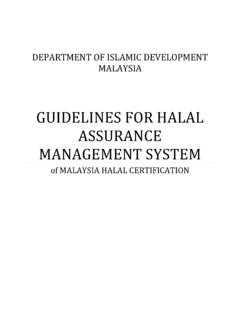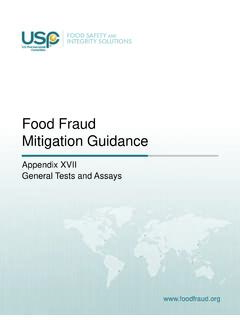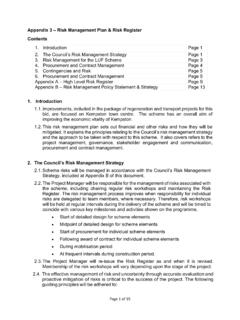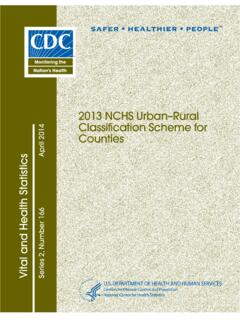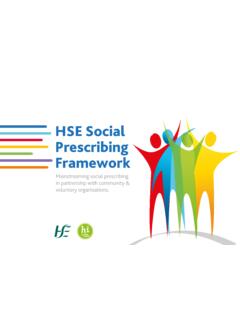Transcription of Waste Management Handbook 2014 - Health Service …
1 Waste Management Awareness Handbook 1 Health Service EXECUTIVEW aste Management Awareness Handbook2014 Storage Ca G 2 DocumentDocument William RobanReference Number HSQE-WM3 Developed by Estates DirectorateDublin Mid-LeinsterRevision Number Rev ADocument Estates Head ofApproved by Health Safety, Qualityand EnvironmentApproval Date February 2011 Responsible for All HSE EmployeesImplementationRevision Date5 YearsResponsible for Estates Manager forEvaluation and Environment and AuditWasteWaste Management Awareness Handbook Service Executive (HSE) Waste Legislation .. Waste Management Statutory of Holder of and Policies and Details of Prevention/ Good Practice Notes from C&AG Value For Money Report, Green Procurement.
2 Life Cycle Analysis (LCA) .. Green Producer Responsibility HSE Social Responsible Policies and Waste .. Segregation and Packaging .. Storage .. Health Storage Units for Healthcare Risk Waste Health & Safety Handling .. Sharps .. Waste Tracking and Record , Transport and Final Collection Waste Transfer Form (WTF) .. Transfrontier Shipment (TFS) Dangerous Goods Regulations (ADR).. Trade Audits ..33 Table of Contents4 Traditional perception of landfillFigure 1:Healthcare Waste 2: Waste Management Hierarchy ..9 Figure 3:Life Cycle 4:Clonakilty/Monaghan CTC Audit (PCCC) ..19 Figure 5:Waterford EPA Audit (Acute)..19 Figure 6:Origin of Food Waste in a Hospital ..19 Figure 7:Healthcare Waste 8: Waste Audit Procedure.
3 33 Figure 9:The Results of a Typical Healthcare Risk Waste 10: Waste Segregated during the Healthcare Risk Waste 11: Waste Segregated into Non-Risk Waste and Risk Waste of Figures5 Appendix APoster Segregation and Packaging for Healthcare Risk and Non-RiskWaste Segregation of Healthcare Waste Figure from The Segregation,Packaging and Storage Guidelines for Healthcare Risk Waste Standard Precautions PosterAppendix BExample of Waste Transfer Form (WTF) and European Waste CatalogueList (EWC)AppendicesPoor Waste management6 1 Comptroller and Auditor General Report on Value for Money Examination, Report No. 49, Value for Money inHospitals, 2005. different Waste streams are generatedin the delivery of the Health services.
4 Theresponsible Management and disposal ofsuch wastes is an onerous task forhealthcare personnel, involving environ-mental, Health and safety Handbook has been prepared by theEstates Directorate of the HSE acting in anadvisory capacity, to help developawareness of good practice in wastemanagement for all staff working in thehealthcare sector. A general overview ofwaste Management principles is providedand details of further references areincluded for those who require more Handbook , together with appropriatetraining, aim to inform staff, reduce thehealth and safety risk associated withhealthcare Waste and assist in achievingcompliance with Government policies,statutory requirements and other relevanthealth sector guidelines.
5 In doing so, theyshould also help to reduce the impact on theenvironment as well as result in savingsfrom the efficient Management of the Comptroller & Auditor General (C&AG)carried out a Value for Money examinationof Waste Management in hospitals in C&AG s report, published in 2005,found that while healthcare risk Waste waswell managed there was considerablescope for improvements in the managementof other Waste steams and the level ofrecycling was low. The C&AG report1sought to identify current practices in wastemanagement, the level and type of wasteproduced and the associated disposalcosts. The report highlighted a number ofareas for improvement notably theidentification of costs and quantities for thedisposal of some wastes and the lack oftargets and performance measurement inhospital Waste Management plans.
6 Inresponse, the HSE has acknowledged thefindings and has made Waste Management ,as it relates to environmental protection andvalue for money, a key Guidelines use as their basis: DOHC/HSE Segregation Packaging and Storage Guidelines for Healthcare RiskWaste 2010 November 2010 Comptroller & Auditor General (C&AG) Value for Money Report on WasteManagement in Hospitals 2005 Healthcare Services Executive (HSE) Waste Management Policy - EstatesDirectorate Statement of Principles December 2010 The guidance given in this document in relation to Healthcare Waste is of a general requiring more specific advice in this area are referred to the DOHC 2004 Guidelines updated 2010 by Waste is defined as solid or liquid Waste arising from healthcare or healthrelated facilities.
7 This Waste comprises two fractions, namely risk Waste and non-risk wasteas illustrated below. Figure 1: Healthcare Waste CatergorizedScopeThis is categorised as Waste whichis potentially harmful to those whocome into contact with it, due to itsinfectious, biological,chemical,radioactive, sharp content; It isclassified as hazardous. This category of Waste , includeswastes which are not classified ashazardous.*Note: The term non-risk is use todistinguish this Waste from hazardouswaste. it should not be taken as implyingthat the Waste is without risk if carelesslyhandled(Hazardous)(Non-Clinica l Healthcare Waste )*8 HSE Waste Management POLICY2 Mission Statement: The Health Services Executive is commit-ted to maintaining a Waste managementsystem that is safe, efficient, cost effectiveand respectful of the environment AIMS: To protect public Health & safety.
8 To provide a safe working environmentfor staff. To minimise the environmental impact ofwaste generation, transport, treat-mentand disposal. Reduce Waste handling and disposalvolumes and costs without compromis-ing Health care : Foster commitment from all staff andmanagement to actively participate in 1. Waste avoidance2. Waste reduction3. Waste reuse4. Waste recycling programs To comply with Environmental, Safetyand Welfare legislation and Policies. To adopt and implement the WasteManagement Policy throughout theHSE. To monitor performance and reviewWaste Management practices at leastannually. Develop practical guidelines for:1. Waste minimisation2. Use of returnable packaging3. Re-usable products4. Recycling equipment within purchasing guidelines Introduce a continuing Waste manage-ment education program for all staff toincrease awareness of OccupationalHealth and Safety issues and wasteminimisation principles.
9 Adopt policies and procedures tominimise the environmental impact ofwaste treatment and Health Service Executive (HSE) Waste Policy2 Healthcare Services Executive (HSE) Waste Management Policy - Estates Directorate Statement of PrinciplesDecember national policies and strategies aim to implement the Waste Management hierarchy(Figure 2). This prioritizes Waste options in terms of environmental impact. These policiesprioritise Waste Management options in terms of environmental impact. The first step ingood Waste Management practise is to prevent or minimise the Waste we produce. If wasteproduction cannot be prevented then reuse and recycling are the next preferable energy from Waste is the next option, while the least favoured option 2: Waste Management HierarchyThe three principal policy documents that provide the framework on which to base wastemanagement practices are as follows.
10 Waste Management - Changing Our Ways, Department of Environment & LocalGovernment 1998, Preventing and Recycling Waste - Delivering Change,Department of Environment &Local Government 2002, and Waste Management , Taking Stock and Moving Forward, Department of Environment& Local Government list of the relevant legislation pertaining to Waste in the healthcare sector is set out is important that HSE Waste Management practices are compliant with all relevantlegislation. 2. National Legislation 10 LEGISLATIONW aste Management Act, 1996 ( ) and amendments ( No. 146 of1998) and ( No. 166 of 1998) Waste Management (Amendment) Act,2001 ( No. 36)Protection of the Environment (PoE) Act,2003 ( No. 27) Waste Management (Licensing)Regulations, 1997, 2001, 2004 ( No.)
